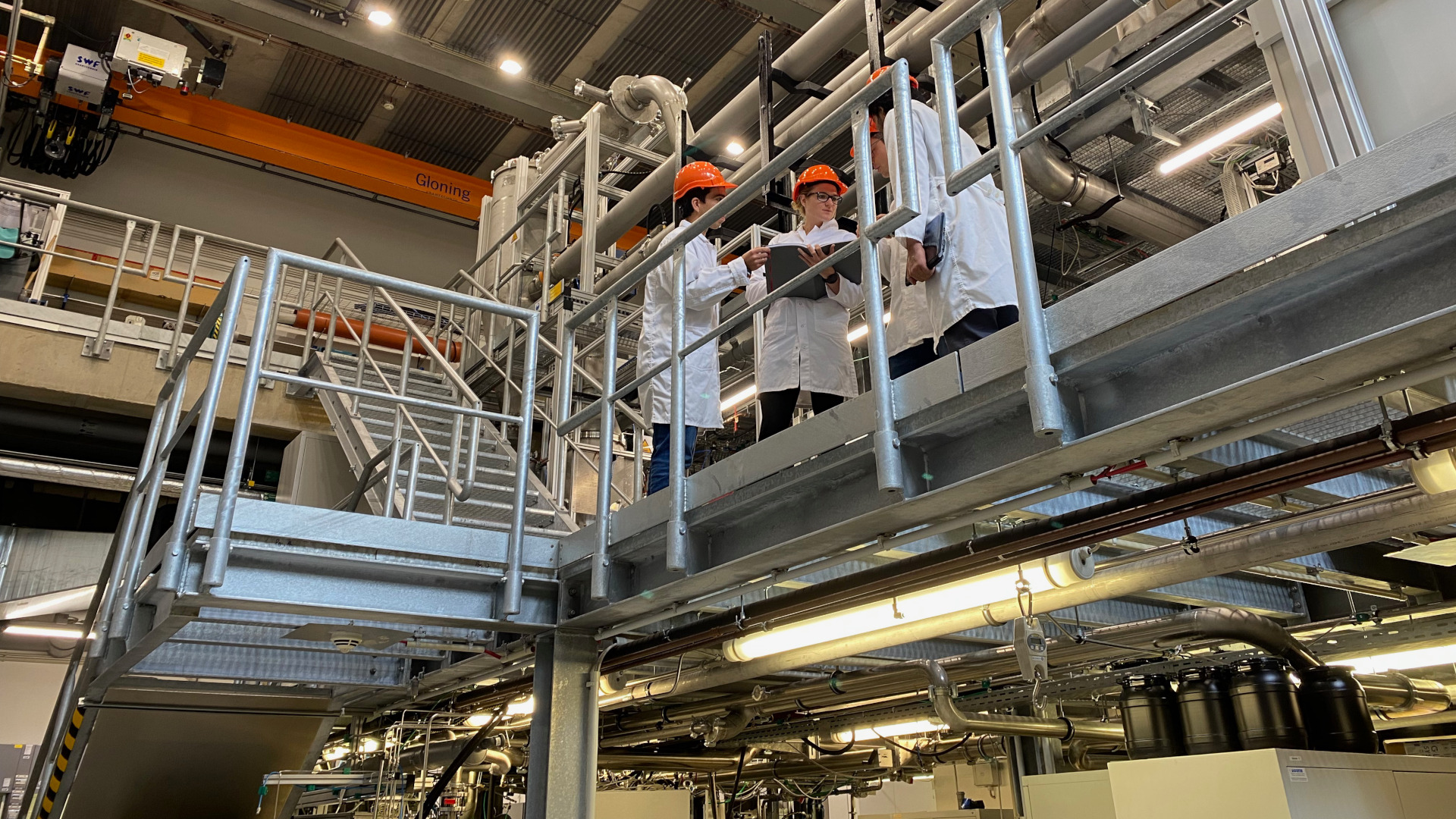
Launch of Solid-State Battery Project
Prototypes within Two Years
- von Birte Vierjahn
- 29.01.2024
Significantly higher storage capacity, safer operation and durability: this is what industry and research expect from future solid-state batteries compared to conventional lithium-ion batteries. A consortium involving the UDE is aiming to realize prototypes up to pilot scale. The decisive anode material was developed at the University's Institute for Energy and Materials Processes. The Federal Ministry of Education and Research is funding the project* for two years with 1.7 million euros.
The structure of solid-state batteries is comparable to conventional lithium (Li) ion batteries. The difference giving them their name is the solid electrolyte instead of a liquid version. This offers three key advantages: (1) solid-state batteries are smaller and therefore well suited for use in e-mobility, (2) as there are no organic compounds in the electrolyte, they contain significantly less flammable material, and (3) they do not require environmentally harmful perfluorinated compounds, i.e. no so-called perpetual chemicals, which are barely degradable and therefore accumulate in water and soil.
At present, solid-state batteries are only used in a few niche applications - the FB2-SiSuFest consortium led by the University of Münster wants to change this. Their aim is to use anode material produced on a pilot scale to develop realistic prototype cells. The prerequisites for this are provided by the nanoparticle synthesis facilities at the NanoEnergyTechnologyCenter of the University of Duisburg-Essen (UDE).
The scientists headed by Prof. Dr. Hartmut Wiggers use amorphous particles of modified silicon nitride (SiNx) as the anode material to safely store the lithium. "We developed this functional material by analyzing its properties and clarifying the underlying mechanisms for the charging and discharging process," says Wiggers. "From this, we realized that the special structure of the particles ensures very rapid distribution of the lithium in the storage material." The material can also largely compensate for the tripling in volume that occurs when using pure silicon as an anode material, while still ensuring excellent conductivity.
In addition to scaling up the production process, the UDE scientists will address two further questions within the project: What is the ideal particle size for the anode material? And: What is the optimal Si to N ratio? Simultaneously, researchers at the University of Münster and Justus Liebig University Giessen are developing the solid electrolyte; the full cells are being produced in the laboratories of the Fraunhofer Institute for Material and Beam Technology IWS in Dresden.
* The Federal Ministry of Education and Research is funding FB2-SiSuFest as part of the Clusters Go Industry funding guideline as part of the FestBatt cluster.
Image: A part of the nanoparticle synthesis facility at the NanoEnergyTechnologyCenter of the UDE.
Further Information:
Prof. Dr. Hartmut Wiggers, Institute for Energy and Materials Processes (EMPI), +49 203/37 9-8087, hartmut.wiggers@uni-due.de
Editor: Birte Vierjahn, +49 203/37 9-2427, birte.vierjahn@uni-due.de
